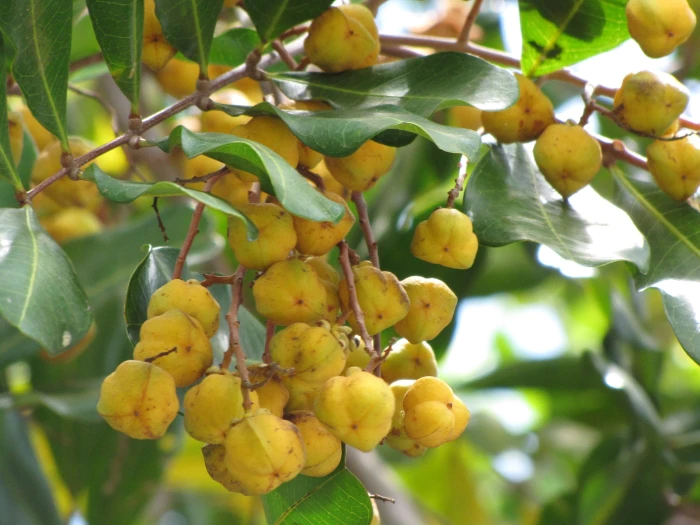Carrotwood
(Cupaniopsis anacardioides)
Carrotwood (Cupaniopsis anacardioides)
/
/

Forest and Kim Starr
CC BY 2.0
Image By:
Forest and Kim Starr
Recorded By:
Copyright:
CC BY 2.0
Copyright Notice:
Photo by: Forest and Kim Starr | License Type: CC BY 2.0 | License URL: https://creativecommons.org/licenses/by/2.0/ | Uploader: Starr Environmental | Publisher: Flickr |






























































Estimated Native Range
Climate Requirements for Methuen Town, Massachusetts
| This Plant | Your Site | Plant Suitability for Your Location | ||
|---|---|---|---|---|
| • Precipitation | 10" - 216" | 44" | Aquatic | Aquatic |
| • High Temp. | 74°F - 102°F | 83°F | Your summer temperatures are normal for this plant. | Excellent |
| • Low Temp. | -6°F - 73°F | 15°F | Your winter temperatures are normal for this plant | Excellent |
This plant should grow well at your location with about N inches per year (Y minutes per month) of irrigation.
Summary
Cupaniopsis anacardioides, commonly known as Carrotwood, is an evergreen tree native to coastal rainforests and riverine forests of eastern Australia. It can grow up to 10 meters (33 ft) tall with a stem diameter of 50 centimeters (20 in). The bark is smooth, grey or brown, and features raised horizontal lines. From May to July, greenish-white flowers bloom in panicles, and the showy fruit is an orange to yellow capsule with three lobes that ripens from October to December, attracting a variety of birds such as the Australasian figbird, olive-backed oriole, and pied currawong.
Carrotwood is valued for its hardiness and salt tolerance, making it suitable for coastal plantings. It is often used as an ornamental tree or for street planting due to its compact size and attractive foliage. The tree requires full sun to part shade, medium water, and well-draining soil to thrive. It is relatively low-maintenance once established. However, gardeners should be aware of its potential to become invasive outside its native range, as it can spread aggressively in favorable conditions. In some regions, including parts of Australasia and the United States, it is considered an invasive species.CC BY-SA 4.0
Carrotwood is valued for its hardiness and salt tolerance, making it suitable for coastal plantings. It is often used as an ornamental tree or for street planting due to its compact size and attractive foliage. The tree requires full sun to part shade, medium water, and well-draining soil to thrive. It is relatively low-maintenance once established. However, gardeners should be aware of its potential to become invasive outside its native range, as it can spread aggressively in favorable conditions. In some regions, including parts of Australasia and the United States, it is considered an invasive species.CC BY-SA 4.0
Plant Description
- Plant Type: Tree
- Height: 25-35 feet
- Width: 25-35 feet
- Growth Rate: Moderate
- Flower Color: N/A
- Flowering Season: Winter, Spring
- Leaf Retention: Evergreen
Growth Requirements
- Sun: Full Sun, Part Shade
- Water: Medium
- Drainage: Slow, Medium
Common Uses
Low Maintenance, Salt Tolerant, Street Planting
Natural Habitat
Native to coastal rainforests and riverine forests of eastern Australia
Other Names
Common Names: Carrot Weed, Tuckeroo, Beach Tamarind, Green-Leaved Tamarind
Scientific Names: Cupaniopsis anacardioides, Cupania anacardioides, Alectryon anacardioides, Cupaniopsis anacardioides f. genuina
GBIF Accepted Name: Cupaniopsis anacardioides (A.Rich.) Radlk.